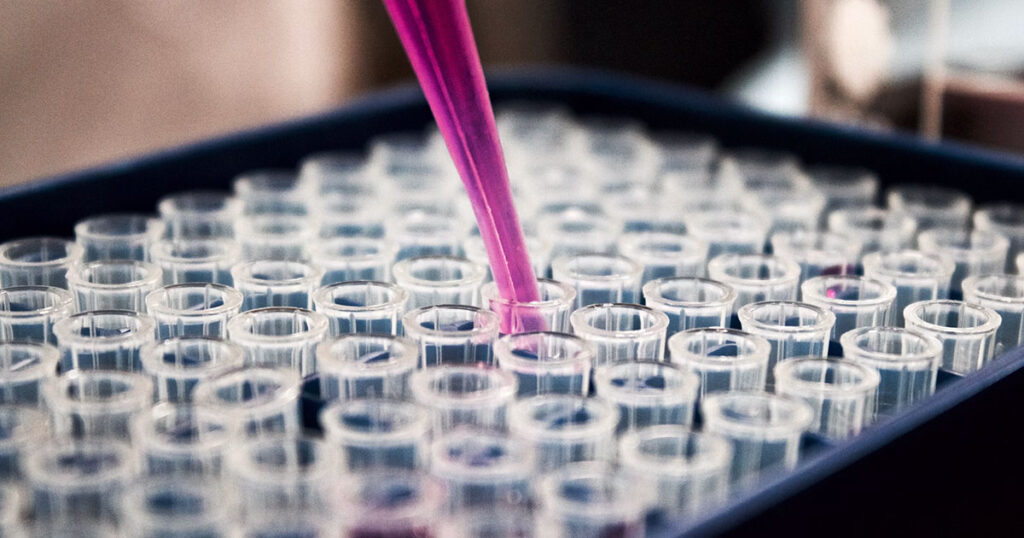Cagrilintide is a novel peptide that has gained significant attention due to its potential applications in weight management and metabolic disorders. Developed as an analog of amylin, a hormone produced by the pancreas, Cagrilintide works to regulate appetite and glucose levels. It is often used in combination with GLP-1 receptor agonists, making it a powerful tool in the fight against obesity and related conditions.
What is Cagrilintide?
Cagrilintide is a synthetic analog of amylin, designed to improve metabolic health by slowing gastric emptying, reducing food intake, and modulating glucose regulation. It is being researched for its potential to help individuals manage obesity, type 2 diabetes, and other metabolic issues. When combined with GLP-1 receptor agonists like Semaglutide, Cagrilintide shows promise in enhancing weight loss outcomes, making it a candidate for future therapeutic options.
How Does Cagrilintide Work?
Cagrilintide mimics the function of amylin, which naturally works to:
- Delay gastric emptying: This slows the rate at which food leaves the stomach, helping individuals feel fuller for longer periods.
- Reduce appetite: By influencing satiety signals, Cagrilintide can lead to reduced caloric intake.
- Regulate glucose levels: Amylin is known to complement insulin’s effects by slowing the absorption of nutrients into the bloodstream, helping control blood sugar spikes.
Benefits of Cagrilintide
- Weight Loss: One of the most notable benefits of Cagrilintide is its impact on weight reduction. In clinical trials, individuals using Cagrilintide in combination with GLP-1 agonists experienced significantly greater weight loss than with GLP-1 agonists alone.
- Improved Satiety: Users report feeling fuller and less likely to snack between meals, which helps control caloric intake.
- Potential for Type 2 Diabetes Management: Due to its effects on glucose regulation, Cagrilintide is being studied as a potential adjunct treatment for individuals with type 2 diabetes.
Dosage Guidelines for a 5 mg Vial of Cagrilintide
If you have a 5 mg vial of Cagrilintide, it’s important to follow proper dosing protocols to ensure effectiveness while minimizing potential side effects. Here’s a step-by-step guide to preparing and dosing the peptide:
- Reconstitution of Cagrilintide
Cagrilintide is typically sold in lyophilized powder form and needs to be reconstituted with bacteriostatic water or sterile saline.- Supplies needed: A 5 mg vial of Cagrilintide, bacteriostatic water, and an insulin syringe.
- Add 1 mL of bacteriostatic water to the vial of Cagrilintide for a concentration of 5 mg/mL.
- Gently swirl the vial until the powder is fully dissolved. Do not shake, as this could damage the peptide structure.
- Dosage Calculation
Once reconstituted, Cagrilintide has a concentration of 5 mg/mL. Common starting dosages range between 0.05 mg and 0.3 mg per injection for weight management, depending on individual factors such as body weight, treatment goals, and tolerance. For example:- 0.05 mg dose: Draw 0.01 mL (10 IU on an insulin syringe).
- 0.1 mg dose: Draw 0.02 mL (20 IU on an insulin syringe).
- 0.2 mg dose: Draw 0.04 mL (40 IU on an insulin syringe).
It is typically injected subcutaneously, often in the abdomen or thigh, as directed by research protocols.
3. Dosing Frequency
Cagrilintide is typically administered once weekly, similar to other peptides used in metabolic and weight management treatments. It’s essential to start with a low dose and gradually increase based on tolerance and response. Your specific research protocol should guide dosing adjustments.
Potential Side Effects
Like all peptides, Cagrilintide may cause side effects, especially during the initial weeks of use as the body adjusts. Common side effects include:
- Nausea (the most reported side effect, especially at higher doses)
- Gastrointestinal discomfort
- Fatigue
Most side effects are mild and tend to resolve as the body adapts. If side effects persist or worsen, it’s important to review the dosage or consult with a medical professional involved in the research.
Conclusion
Cagrilintide is an exciting peptide that shows promise for improving metabolic health, particularly in weight management. While more research is needed to fully understand its long-term benefits, its combination with other metabolic peptides could mark a significant advancement in therapeutic approaches to obesity and diabetes.
Always ensure that peptides like Cagrilintide are used strictly for research purposes, and dosing should be guided by established research protocols.
Disclaimer: This blog is for informational purposes only and should not be considered medical advice. Always consult with a healthcare professional before starting any new treatment or supplement.




